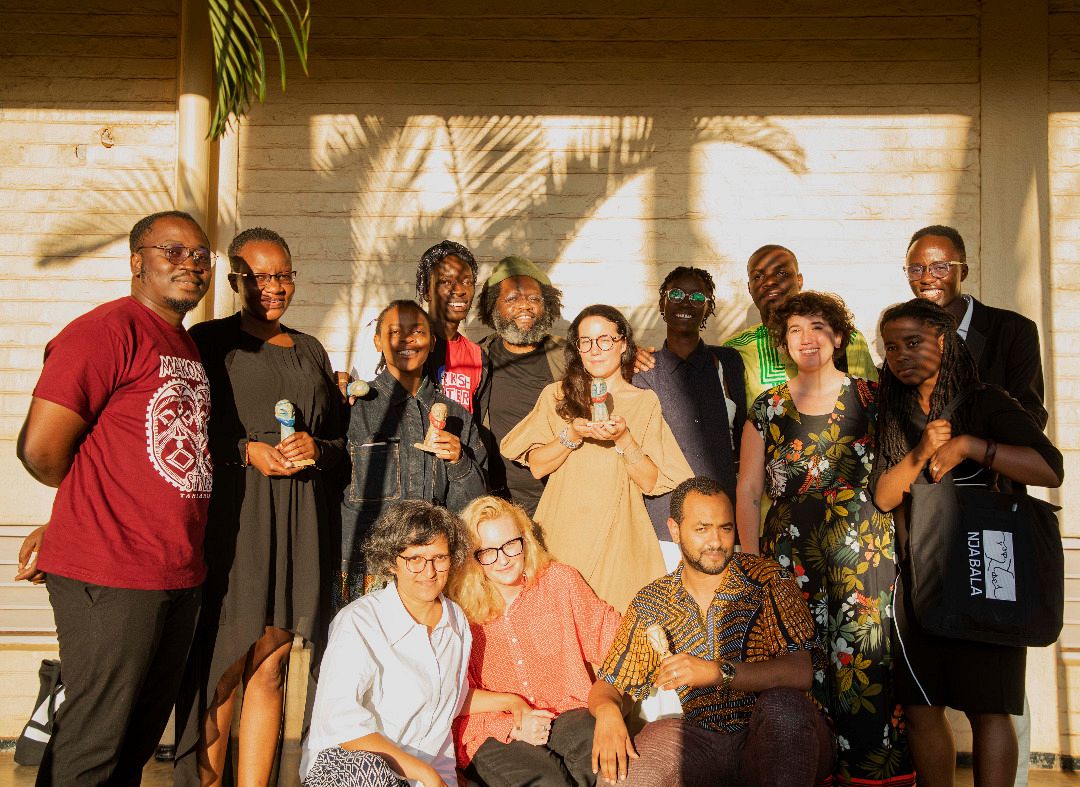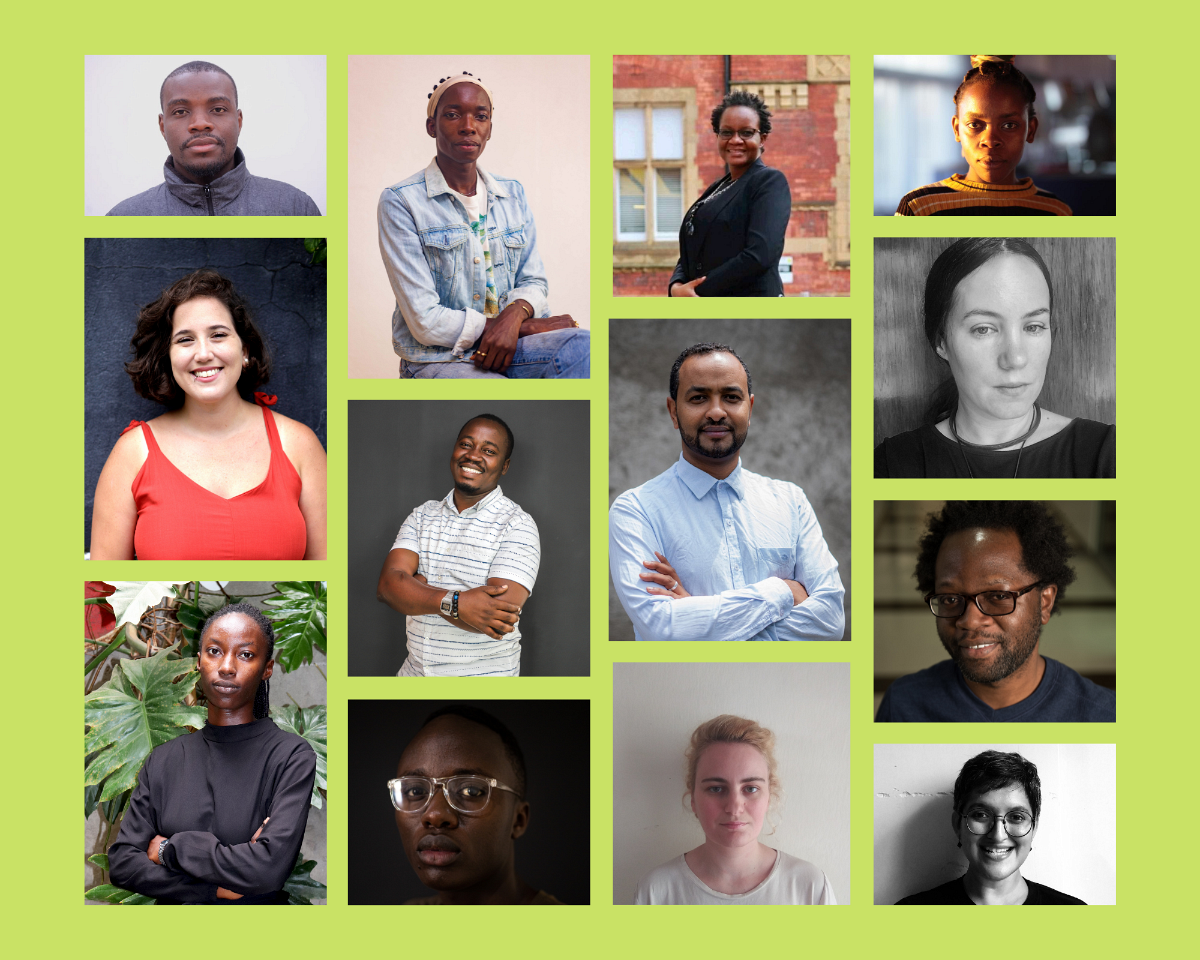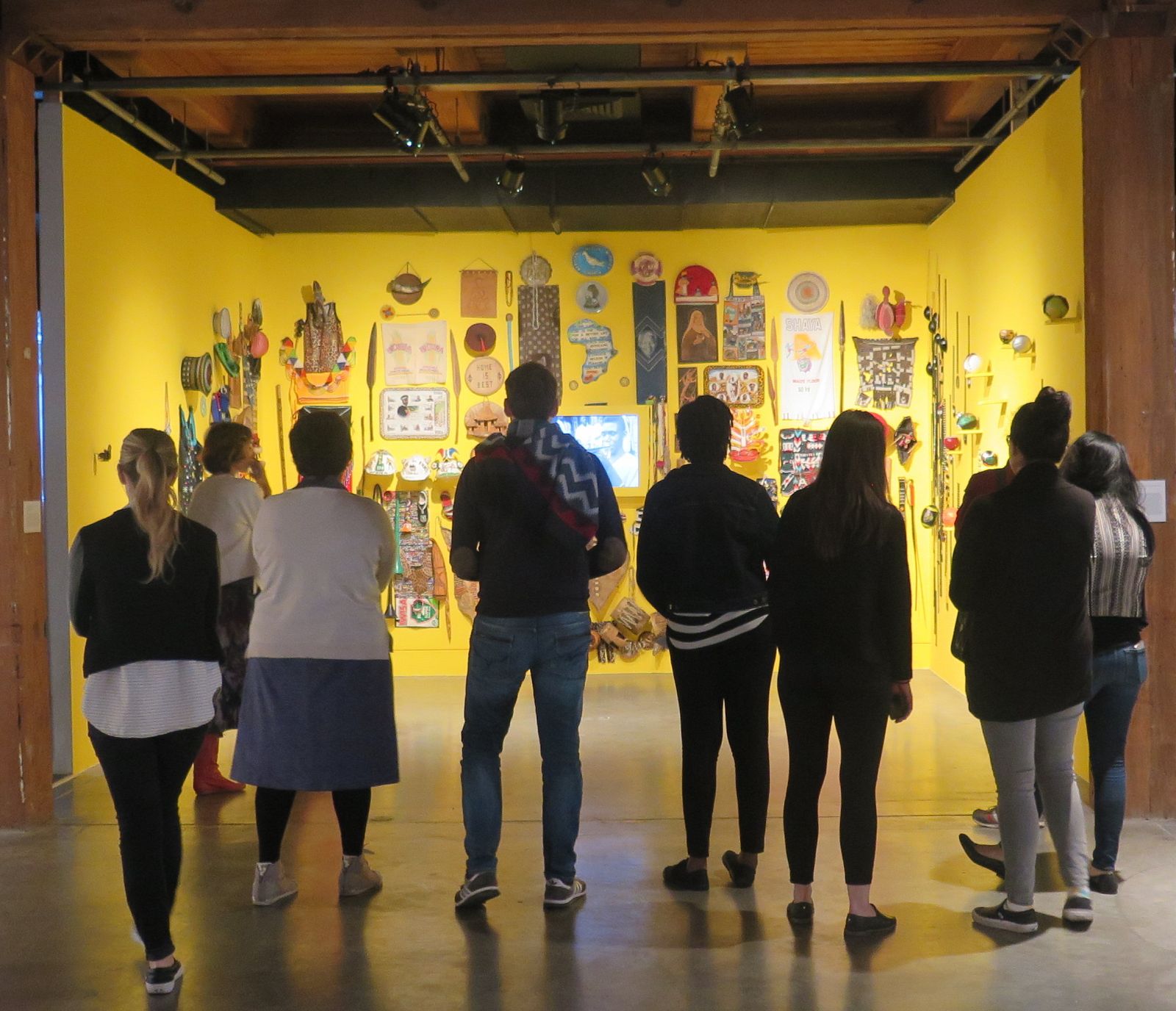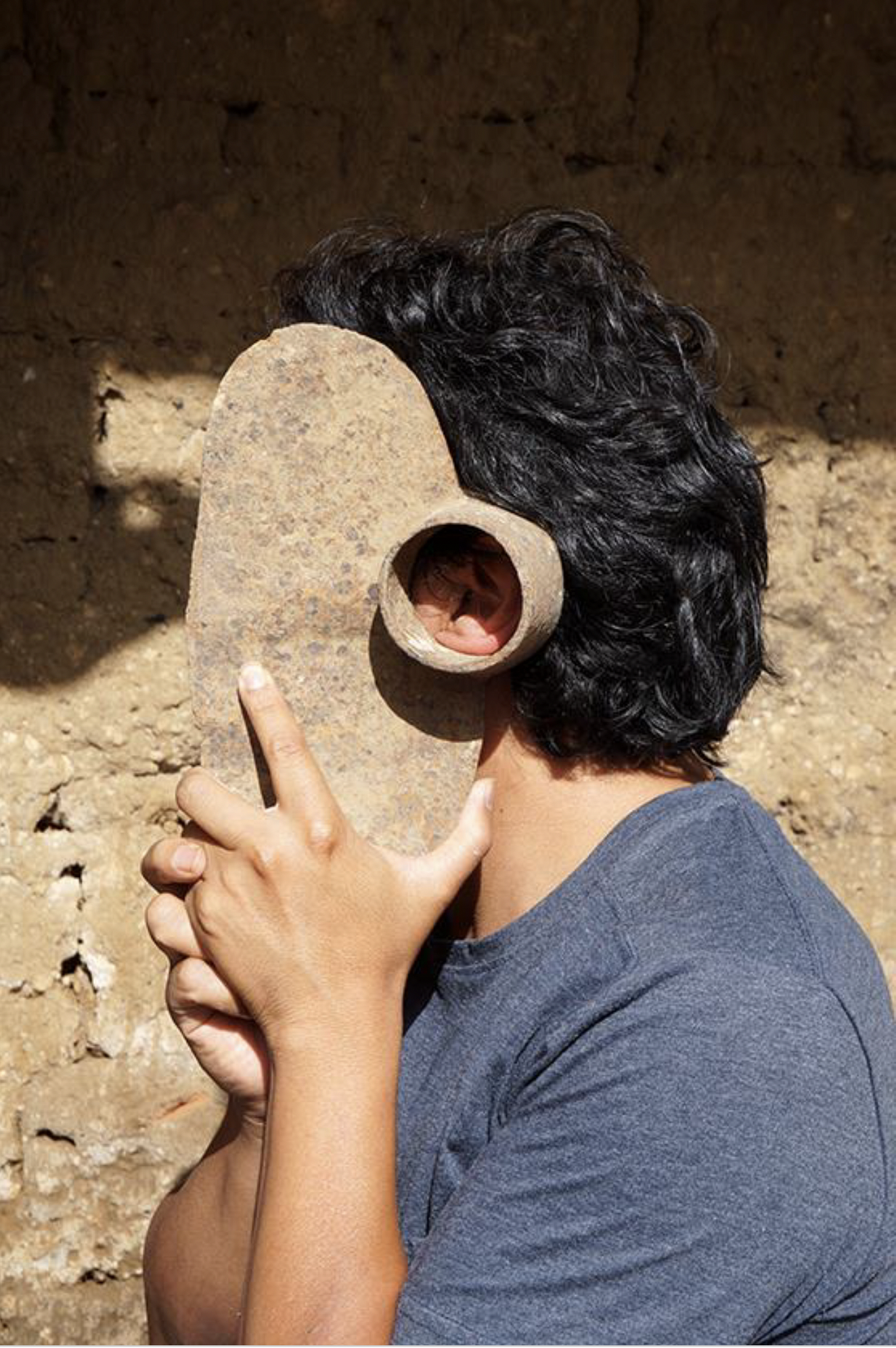GB: You had been doing this work forever—ever since you were little, learning with your grandmother, using the plant of the piri-piri and having visions—but when did you say, "Well, I'm going to call myself an artist." How do you see yourself in what the Western world refers to as “art"?
OS: First of all, I always said "artesana" or "craftsman," because that's what we were taught. And I didn't know that there existed a huge gap between the word "craftsman" and the word "artist." I wasn’t aware of that difference. Until one day a friend told me, "Olinda, don't say you're an artisan, they're going to sell your work very cheap. You have to call yourself an artist." But I had low self-esteem at that time. "Artist, me? Where was it that I studied art?” In other words, I wanted to make people understand that I was an artist and I was also a craftsman, because for me there is no distinction. So I kept saying I am an artisan, we are the artisan mothers.
Once, Professor César Ramos told me, "You are an artist, you were born a popular artist, an artist who is always bringing women forward." From there, it begins. Coming here gave me more opportunities, like the colors of the paint—but we have never left our natural paint, which is traditional, which is mahogany, and the black color made from clay. Within that it’s mixed with different plants; that's why our nails are black. It's not because they’re filthy, but dyed with mahogany bark and then you apply the mud with your hand when you dye it yourself. It doesn't come out quickly, and you still have to wash a lot of clothes by hand to keep it clean.
GB: But, then, you are an artist, but you are also a leader, you are also president of the Cantagallo Association—the largest one in the community [4]. And that's also a lot of coordination, effort, and talking to people.
OS: Art runs in my blood, but being a leader does too, which does not mean always having a position in an organization. From 2000 [when my family moved to Cantagallo] until now, I have been doing many things; one of them being social assistance, even though I have not studied medicine. If there was a sick person, I was taking care of them or taking them to the doctor. I have always been working. Our family, the Silvanos, are leaders because our parents were one of the first families to move to Cantagallo—that is heritage too. My father was an honest man, a simple, humble man, he had no education, but he had this gift of fighting for what was right. So, we also follow the path. We do not become leaders to take advantage of being in a position of power, but rather, to seek support, support [others] with what you can, with what you earn. Helps means to be there for people.
GB: What is next for the collective Shiman Inabo? Some of you just made a mural.
OS: We are making one big mural right now; three of us. You know, sometimes people think, “Olinda has made a mural, how much money she received.” No. It is not for me alone, it is like an ant colony, and we distribute it. It is probably not enough for [all of] us, but we are happy.
Right now many girls are improving their embroidering skills. So many little ones. Many women are already exhibiting in different places. Look at Cordelia [Sánchez]. She didn’t have any painting knowledge and now she is one of the best. She paints our sacred Shipibo knowledge and kené patterns. Her work is impressive and is being showcased in Peru and internationally in countries like Colombia and Mexico. Some others started to do clothing design, such as my sister Sadith, who is creating a collection.
GB: She is an extraordinary designer.
OS: And that makes me feel happy. If something happens to me, I already have my sister who is going to help people improve.
We are seven sisters: Zaida, Lucy, Jéssica, Marilú, Sadith Silvano—Rosy Silvano, but she is at university. She is not far behind, she has two little children, but she keeps going because she wants to be something in life. And my sister-in-law Pilar has just given birth to a beautiful baby for the Silvano family. And I'm proud of my sister-in-law too.
I am also very proud of Metsá Rama (Pilar Arce) because I was able to help her to move forward. She was cleaning houses, but as a house cleaner, she was usually mistreated. So one day I told her: "Pilar, you have been the beauty queen of Paoyhan, in Pucallpa. Now you are going to become a queen of art." And she laughed. "Don't laugh, let's go. I'm going to give you my materials. What you get today is going to be for you, so you can start," I told her. And we went to the stop to buy some stuff so she could start working." She is now also a teacher and a Shipibo-Spanish translator.
GB: To conclude, could you explain what Kené means to you?
OS: Kené represents the energy of the Shipibo people and symbolizes the unity of the community. It is our source of inspiration. Kené is not a geometric pattern that can be simply copied from another person or drawing. Kené appears in your mind, and it takes its design as you grab the paintbrush and get working. It draws from the energy of the plants and the energy of the Ucayali River, which is vital to our lives, providing water, fish, and more. You could even say that Kené is art, but Kené is much more complex than art –it is philosophy, medicine, and science.
GB: So Kené is like a second vision, a multiple vision. And what about art?
OS: During the pandemic, we've faced many challenges and moments of sadness. Our work and journey have been disrupted. But in these difficult times, we turn to art for healing. I believe that art is not just therapeutic but essential to life. It's life itself. I can't imagine living without art—it brings me joy and makes me feel alive. I consider myself fortunate. I value myself and my work and knowledge, even if others may not appreciate it. For me, art is everything.
[1] Founded in 1992, INSITE is a cultural initiative focused on commissioning artworks in the public sphere through collaborations among artists, cultural agents, institutions, and communities locally and abroad. The project is based in the Mexico/US border region of Baja California and Southern California. https://insiteart.org/commonplaces
[2] Cordelia Sánchez (1985, Peru) is a painter based in Cantagallo, Peru.
[3] Sadith Silvano (1990, Peru) is an artist and designer based in Cantagallo, Peru.
[4] Acushikolm Association founded in Cantagallo in 2006.
Intensives in Action programs showcase how alumni of our flagship professional development program, the Curatorial Intensive, have brought their Intensive proposals to life. The Curatorial Intensive has, since 2010, taken place in more than 25 cities around the world and engaged almost 500 international curators. During the program, participants develop proposals for exhibitions, research, programs, or other projects through intensive study, with the guidance of international mentors, and in conversation with a cohort of peers.
Encompassing tours, texts, talks, and other content, Intensives in Action programming highlights the work and process of Curatorial Intensive alumni through the lens of these proposals, the projects they become, and the many dynamic career trajectories they shape.












